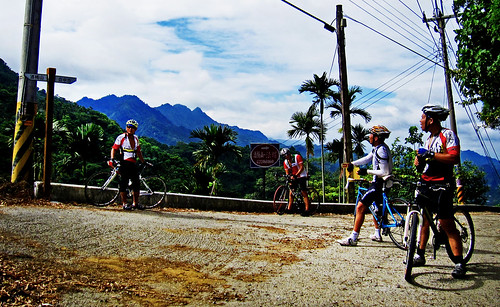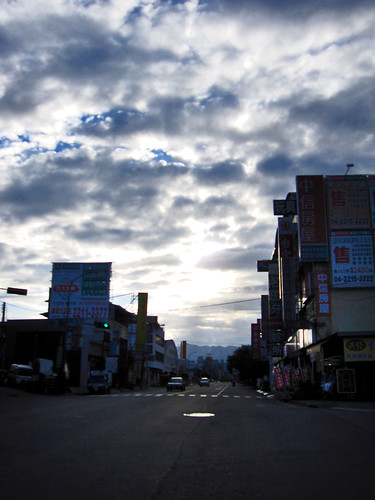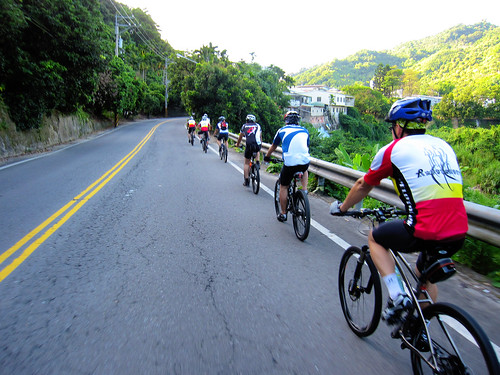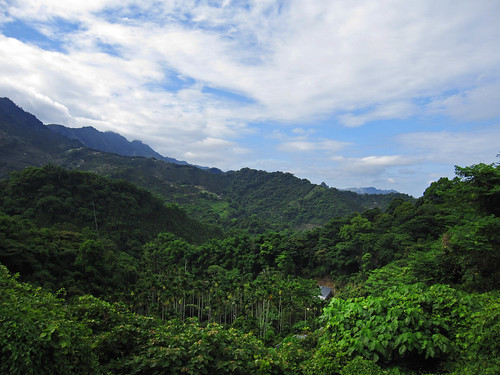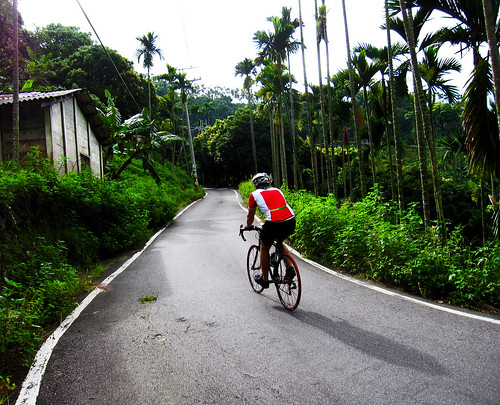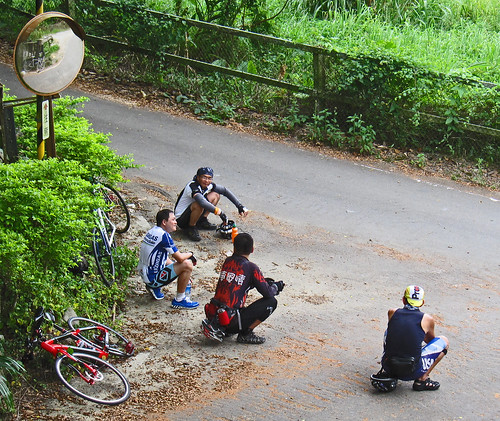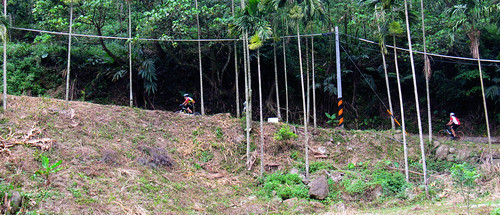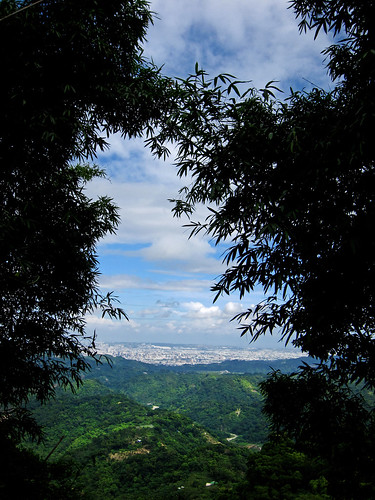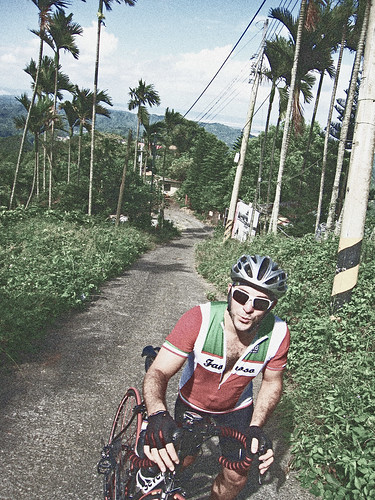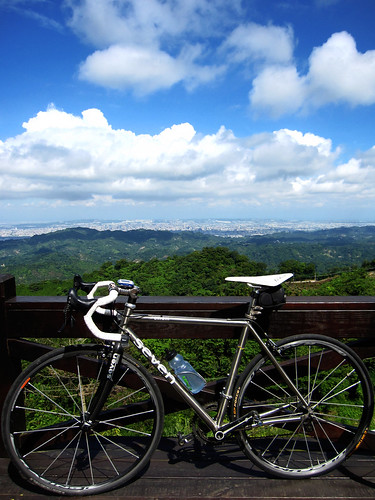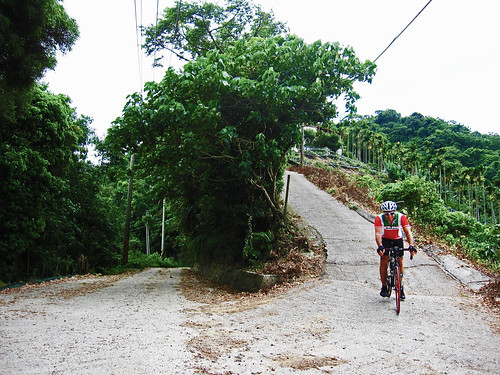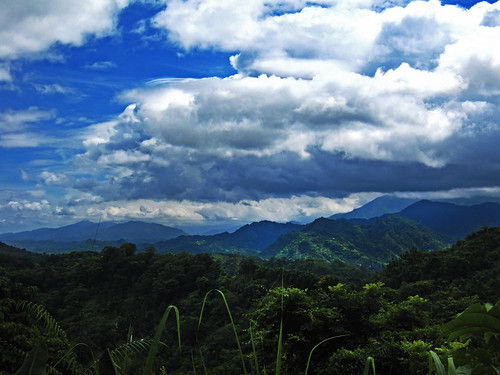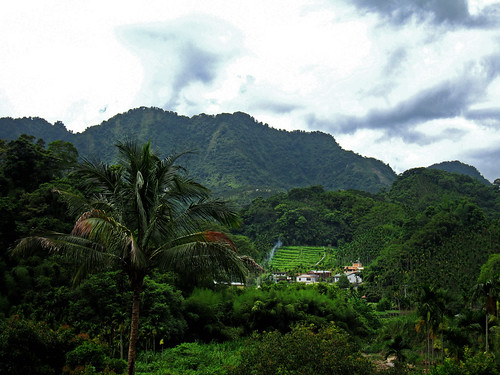
Regular readers may know that, for this rider, Da Hsueh Shan, the 28km of climbing out of the Dajia River Valley, is a mountain of disappointment. This is the climb that, on paper, shouldn't be anything extreme... and yet... every time I ride this mountain it seems things go smoothly. This is the climb where my other orange bike cracked the head tube. This it the climb where I ran out of gas while training for Wuling last year. This is the climb where I ran out of water on a surprisingly sweltering winter morning. This is the climb I have never felt I have made to feel "easy".
After completing this ride I could only reflect upon how typical it was for a ride in the Taiwanese summer. The first thing to know is that the only predictable thing about a Taiwanese summer, is that Taiwanese summers are wildly unpredictable.
I regularly get requests from riders thinking about visiting Taiwan and wondering if the weather will be suitable in the summer when most people have vacation. It is a hard question to answer as there are dry summers and wet summers. Summers are always hot and humid, but I find it completely manageable as long as I am moving and generating a little self-propelled A/C.
Here is how this particular summer ride panned out.

I woke up early to get a jump on the day's extreme temperatures. In the humidity a slow climb can be simply torture in the direct sunlight.
Summertime really doesn't give a rider much of a choice. You can either fight the climbs or fight the wind. Despite the boon of an eventual tailwind, the flats are a swirl of stiff crosswinds and the dreaded headwind from the south. I find winds to be more demoralizing than the hills because when you eventually get to the top of the hill you feel like you accomplished something. When fighting a wind, you just have a flat hill with no payoff.
My legs creaked into service and I spent the entire way to Dongshih lamenting my inability to get the legs warmed up.
As I started to get into rhythm around Dongshih, I turned up the road to Da Hsueh Shan... except it wasn't the road to Da Hsueh Shan. I swear the first few kilometers of Dong-qi Jie ( ) and Dong Keng Rd. look almost identical. It is easy to get sucked into the wrong task. Nothing against Dong-qi Jie, and I even contemplated just continuing to the DaAn River and up to the climbs above Tian Gou Village, but I really had a hankering to mount another campaign on Da Hsueh Shan.
Of course, it was not lost on me that I had wasted a good chunk of morning coolness retracing my steps back to Dongshih, only to pedal four blocks over to the correct road. On the plus side, my legs were feeling better.

I kept a good speed on the lower parts of the climb, the sun was getting hot, so I tried to manage my water and keep moving. I wasn't sure how well I was climbing until I passed a group of three riders and they were gone as soon as they appeared. I knew the important parts of the climb, so I managed my energy accordingly with the right balance of soft pedaling and heavy pedal work on the ramps.
I had stuffed a mini water bottle in my jersey pocket for use if the only water supply up on the mountain had been closed. Luckily it was open of business and I stopped to refill. After standing in one place for a few minutes I looked down and noticed a growing puddle of perspiration fed by the natural conduits on my arms and legs. I couldn't tell if my stop was a good thing or if the heat was making it unbearable.

The morning traffic was picking up and the road was beginning to fill with caravans of luxury sedans and VW Transporter vans ferrying hikers up to the higher trails.

I threw myself onward and upward. Except for a section of harder climbing through the bamboo and cedar groves, most of the painful stuff was over. I was fairly pleased with my progress, but I felt I could have done a better job last year when I was in excellent climbing shape.
One of the nice things about having a climb like this so close, is that in 10km you can go from thick, steamy jungle, to the cool shade of cedar boughs. It is an entirely different biome and reminds me of my time growing up in the Pacific Northwest of the United States.

Then, like as it always does, something happened on Da Hsueh Shan to bring my joyride to an end.
First, I started to feel cramping in my right calf. It could have been the heat. It could have been the fact that the cleat was broken forcing me to ride different. It could have been that I needed to stretch a bit more. Or simply that I am not yet in shape to tackle this climb. But it happened.
I kept playing with my position to ease the cramp away, but it kept pushing into my bones like a vise. As I tried to find a better angle to bring the cramping down, I guess I made the wrong move and triggered a severe cramp that locked my calf down tight. As I unclipped to straighten my leg out, my lower quad and hip seized up as well. This is not good at any time, but especially bad in the middle of a climb when there you can't seize the momentum to buy time to safely coast to a stop.
I was a fraction of a fraction of a moment from tipping over onto my side, unable to unclip. Every rider with clip less pedals has had moments like these when you realize you need to unclip. The face is flushed with a wide-eyed expression of panic as the mind and body race for enough balance and poise to safely dismount.
I straightened my leg out and spent some time to stretch under the shade of the forest. About the time the cicadas grew bold enough to start buzzing away I was back underway up to the 22km mark. My calf was still sore and threatening to flare up again. The goal was to punish my legs, so I was resolute in continuing to the end.
Then, I noticed the blue sky and puffy clouds had been replaced with a matte grey blanket of cloud cover. It looked like rain, and the last place I wanted to be in the rain was up on a mountain.

Since something always happens to me on Da Hsueh Shan, I took the cramping and rain clouds as all the evidence I needed to turn tail and go for home.
Welcome to the Taiwanese summer. It was still morning and I was already charging home in a mad dash to beat the rain.
I took the descent pretty slow as the oncoming drivers were merciless in their occupation of the entire roadway. Several cars were ferrying bikes up the mountain. I have no clue where they ride when they get there. The road wasn't in really great shape anyways. There were pits, ruts and potholes dotting some of the best sections. I probably had my tires overinflated as well, leading to an amplification of each bump. I read the braille on the roadway with its message to take it a bit slower.
Once I reached Dongshih, I turned back to see the entire mountain had been consumed by an obvious rain cloud that was fast approaching.
I realized I had to leave everything on the road before Taichung and turned as large a gear as I could manage in my race against a downpour.
My quads burned white hot as I stayed on the big ring (53) for each climb on the way to and through Hsin She, continually downshifting to test the low end of my engine for enough grunt to outpace the winds.
I also knew that I was in the red and there wasn't enough raisin bran in the system to keep it up.
Sprinkles dotted my face and I contemplated calling it quits at a 7-11 where a nice cold ice cream might make the hurt go away, but Taichung looked clear so I kept the wheels on the road.
I slid down the Route 129 to Dakeng and gave every last bit of energy pushing top speed to Beitun Rd.
The legs were practically numb with exhaustion. I was done. Cooked. Finished. There was no more. My legs had been running on empty and every last bit of glycogen had been put to work getting me home.
I ambled through the streets of Taichung no faster than a granny at the market. My legs were pulsating in oscillations between heat and soreness.
I never did see the rain. It never arrived in Taichung and I have no clue if it drenched the hills over Dongshih or if it simply covered us with just enough spittle to inspire fear of a downpour.
That is the game we play every summer. Can I bear the heat and get home with a decent ride in my pocket before the skies open up and force me to disassemble the bike to dry the bearings?
I can't wait for Fall.


